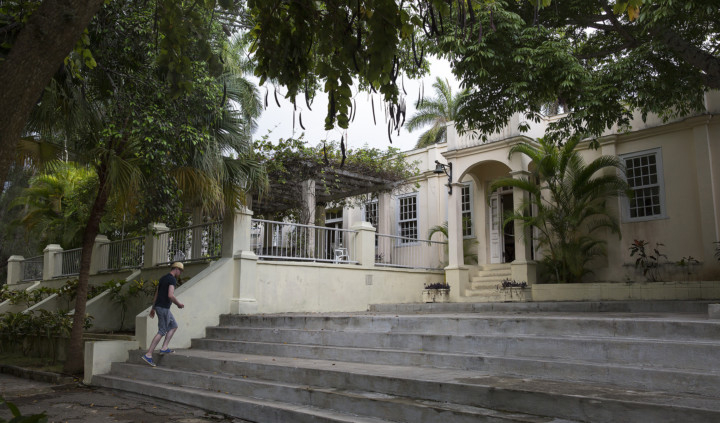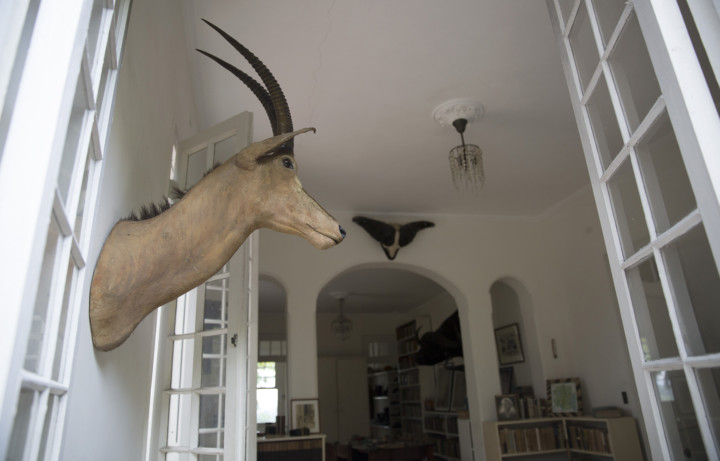
SAN FRANCISCO DE PAULA, Cuba: ‘Did you see the war correspondent’s uniform?” a dazzled visitor asks a companion, as both peer at a musty closet housing vintage garb, much of it martial in nature.
“And the white shoes!” he adds, alluding to the jaunty footwear invoking Gatsby revelry amid the khaki attire and lace-up boots.
Such scenes unfold daily at one of Cuba’s most popular tourist destinations — Finca Vigia (Lookout Estate), the 12-acre villa that was the longtime residence of Ernest Hemingway. It’s the place that the restless expat author called home longer than any other, for the better part of two decades.
Nineteen kilometres east of downtown Havana, Finca Vigia now houses the government-run Hemingway Museum, drawing “Papa” aficionados from across the globe.
There’s no politics here. The conservation project — including the grounds and, crucially, thousands of Hemingway papers — stands out as a singular example of cooperation between longtime adversaries, the United States and Cuba.
-Ernest Hemingway
The museum is also the centrepiece of Cuba’s lucrative Hemingway industry.
Restored glory
A little more than a decade ago, the finca was in disarray — the roof sagging, mould and decay advancing, thousands of documents languishing in basement storage — but the place has been painstakingly restored to 1950s period glory.
A visitor today might expect “Papa” to return any moment to the one-storey house for a drink, literary gossip, musings on baseball or a fish story.
His spectacles sit on a bedside table. The novelist’s Royal typewriter rests atop a bedroom bookcase.
Then there are the books: some 9,000 — almost one-fifth with Hemingway’s personal scribblings — line shelves found in most every room. Pencilled notations on the bathroom wall next to a scale mark where he daily noted his weight.
Not visible, however, is the preservation effort’s core: now-safeguarded manuscripts, correspondence, photographs and other memorabilia. By all accounts, Hemingway — trailblazer of the spare prose style — was a pack rat.
He “never discarded anything but magazine wrappers and three-year-old newspapers,” wrote his fourth and final wife, Mary Welsh Hemingway. He “had managed to stuff to its brim almost every little drawer of the Finca.”
Hemingway initially moved here in 1939 with Martha Gellhorn, an acclaimed war correspondent who would become his third wife.
Castro revolution
Hemingway later bought the place with proceeds from the Hollywood sale of the rights to For Whom the Bell Tolls, his signature Spanish Civil War novel, which was made into a classic film starring Gary Cooper and Ingrid Bergman.
Hemingway spent much of the 1940s and 1950s at the estate with Mary, a former Time magazine correspondent. At the finca, scholars say, Hemingway put final touches on For Whom the Bell Tolls and penned his comeback, Pulitzer-winning and Nobel-clinching Cuban fisherman’s saga, The Old Man and the Sea, among other works.
Ernest and Mary Hemingway decamped from Cuba in July 1960, in the aftermath of the Fidel Castro-led revolution, but fully intended to return.
After his suicide in Idaho in 1961, a distraught but determined Mary went back to retrieve the couple’s possessions, securing special permission from the Kennedy administration following Washington’s severing of ties with Havana.
As Mary recounts in her memoir, Castro personally came to the finca and vowed to help. Mary Hemingway left Cuba for good with as much documentation, artwork and ephemera that she could stuff into a Florida-bound shrimp boat.
Disrepair
The finca, which became the property of the Cuban government, soon fell into disrepair.
Preservationists pushed for a binational rescue operation. But they faced resistance on two fronts: US hostility toward Havana, and Cuban worries about appropriation of a part of the island’s cultural heritage.
“The Cubans’ fear was that the Americans were going to take things away from them,” recalled Jenny Phillips, a cultural anthropologist who helped spearhead the preservation project in 2001-2002.
She brought impeccable pedigree: Phillips is the granddaughter of Maxwell Perkins, the legendary editor who worked closely with Hemingway and contemporaries, including F. Scott Fitzgerald.
Today, Phillips is co-president of the Finca Vigia Foundation, a Boston-based non-profit that has used about $2 million (Dh7.35 million) in donations for preservation efforts.














